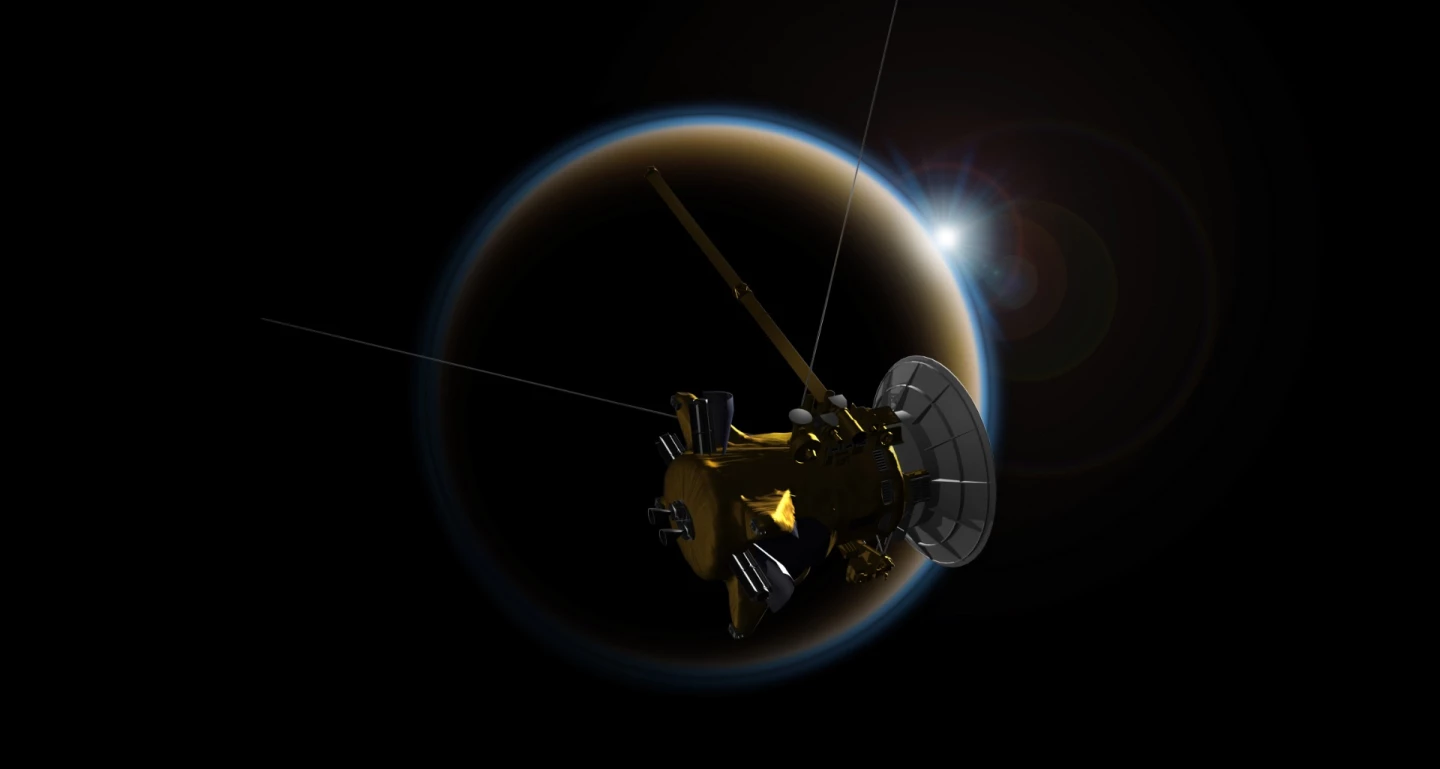The Cassini mission continues to pay dividends long after its demise. The latest insights come from data gathered during its flybys of Saturn's largest moon Titan between 2004 and 2017, which indicate that the satellite has dust storms. Not only does this make Titan only the third body in the system with dust storms after Earth and Mars, it's the only one where the dust is made up of complex organic molecules.
In many ways, Titan is definitely the odd moon out in the solar system. It's the largest moon orbiting Saturn and the second largest in the system, making it even larger than the planet Mercury. More importantly, it's the only moon with a substantial atmosphere – one 1.45 times as dense as Earth that's composed mainly of methane and ethane laced with complex hydrocarbons.
This exotic atmosphere means that not only is Titan unusually active, but it has actual weather similar to that of Earth with open lakes, rivers, and small seas. It also has seasons, rainfall, and cycles. The biggest difference is that instead of water, the system revolves around liquid methane and ethane with a temperature of 94° K (−179.2° C, –354.6° F).

But now findings by a team led by Sebastien Rodriguez, an astronomer at the University Paris Diderot, France, indicate that Titan also has a very active dust cycle with storms that are visible from space. However, unlike Earth and Mars, this dust is made up of complex organic molecules formed by the intricate cryo-chemistry of the Titanian atmosphere. These molecules form in clouds and are generated in such quantity that they "snow" down on the surface at the equator to form large dune fields.
Scientists already knew about this dust from when the unmanned Huygens probe touched down on the surface of Titan, but that didn't mean there weren't surprises in store.
"We believe that the Huygens probe, which landed on the surface of Titan in January 2005, raised a small amount of organic dust upon arrival due to its powerful aerodynamic wake," says Rodriguez. "But what we spotted here with Cassini is at a much larger scale. The near-surface wind speeds required to raise such an amount of dust as we see in these dust storms would have to be very strong – about five times as strong as the average wind speeds estimated by the Huygens measurements near the surface and with climate models."

The dust storm were first seen in data collected by the robotic Cassini orbiter in 2009 during Titan's northern equinox. The images showed what looked like methane clouds, but they were too low to be made up of droplets.
"From what we know about cloud formation on Titan, we can say that such methane clouds in this area and in this time of the year are not physically possible," says Rodriguez. "The convective methane clouds that can develop in this area and during this period of time would contain huge droplets and must be at a very high altitude, much higher than the 10 km (6.2 mi) that modeling tells us the new features are located."
Ruling out surface features, rain, and icy lava, the team used computer models to show that the storms were atmospheric, containing dust raised from the equatorial dunes, which they hovered over in a thin layer.
As well as being of interest in and of itself, this discovery suggests that Titan may be subject to sudden gusts of intense winds similar to the haboobs of Earth that appear in the vanguard of violent storms. This means that the dune fields themselves may be active and change over time like their terrestrial and Martian counterparts.
The research results were published in Nature Geoscience.
Source: ESA







